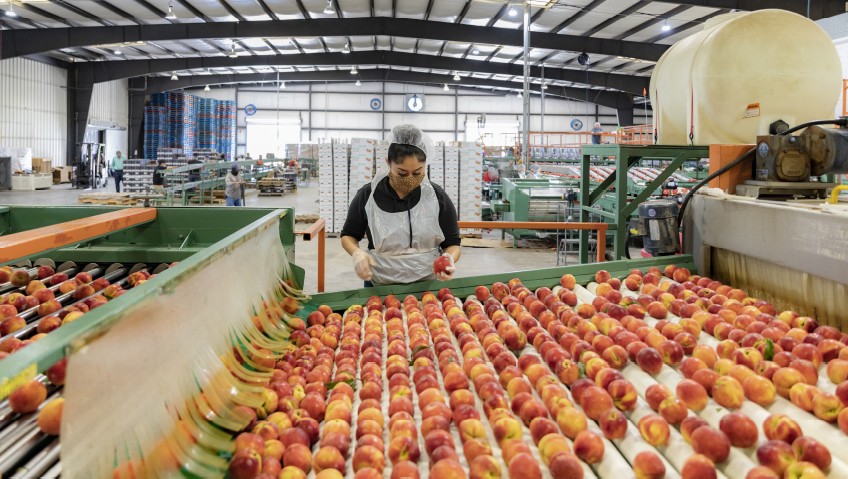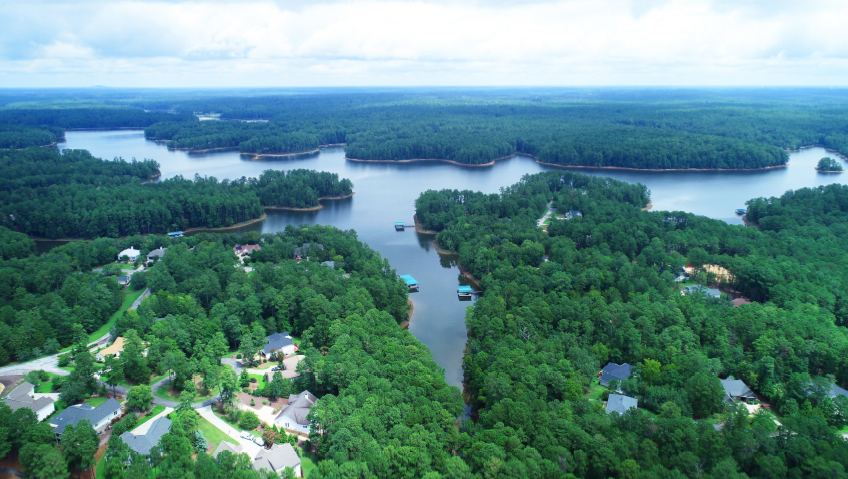Recognized worldwide for the mining of minerals like gold, silver, lithium, vanadium, and molybdenum, Nevada’s economy is also supported by other industries including agriculture, ranching, tourism, and gaming. But now, Executive Director of the Northeastern Nevada Regional Development Authority (NNRDA) Sheldon Mudd is looking to diversify beyond these sectors as the area looks to the future.
“Mining happens organically around here,” says Mudd. “What we are trying to do is create new business and industry clusters that can be leveraged in the off chance that mining experiences an unexpected downturn.”
Today, the NNRDA represents four counties. These are Elko (Carlin, Elko, Wells, and West Wendover), Eureka, Lander, and White Pine (Ely). Founded over a decade ago, the NNRDA helps companies with their location and expansion needs, from incentives to site selection.
Bordered by Oregon, Idaho, Utah, Arizona, and California, Nevada’s available land, very low unemployment rate of just three percent, and no individual state income taxes make the state an attractive place to start or expand a business.
More than mining
Although mining has been integral to the state’s economy since gold was discovered in 1849, Mudd recognizes that Northeastern Nevada is ideal for other sectors—such as manufacturing, logistics, and distribution—to create a more diverse portfolio heading into the future.
Like many other rural communities, Elko, Eureka, Lander, and White Pine are faced with challenges related to location and a relatively low population. As a result, rural Nevada doesn’t have the workforce or variety of retail outlets found in larger centers. Even with its many advantages—from very low crime rates and near-zero traffic to striking mountains and scenery—businesses still need skilled workers.
“We have to be strategic when targeting companies,” comments Mudd. “We can’t recruit a Tesla or Panasonic here because they need thousands of people. We look for companies who require 50 to 200 people, tops, so that we can accommodate growth strategically.”
Even with area employers paying almost double the salary and other benefits found in states such as Idaho and Utah, the challenge of available housing remains. This has led to the NNRDA investigating ways for the area to have larger subdivisions allocated and built to accommodate needs. “It’s a nationwide problem and we understand that,” Mudd explains, “but we have provided potential solutions to our lawmakers that include detailed strategies and they appear to be gaining steam. I think we may be getting out ahead of this issue very soon.”
Attracting business
Despite these challenges, Mudd says, Northeastern Nevada is gaining considerable attention from businesses not just across America, but from Australia, Canada, and other countries.
One of the most recent is Battle Mountain Hydrogen LLC. Based in Northern Nevada, Battle Mountain is focused on the production of green methanol and hydrogen, both low-carbon fuel sources. “It’s one of the biggest things to happen here since mining,” says Mudd of the potential billion-dollar project, currently in the permitting process.
One of the reasons Lander County was selected by corporate representatives as an ideal location is its annual exposure to sunlight—which they indicated is more plentiful even than that of Miami, Florida. Battle Mountain Hydrogen will use the sunlight to power its electrolysis process, generating an authentically “green” fuel source and eliminating the need to rely on local utility companies.
In addition to these exciting new developments, mining continues to expand and grow in the region. Northeastern Nevada is seeing investment from major companies, including the Japanese multinational corporation Komatsu Ltd., one of the world’s foremost manufacturers of equipment used in mines, the military, forestry, and construction. Komatsu is currently wrapping up construction on a massive new warehouse expansion that will add almost 50,000 square feet to its service center campus in Elko.
Set to expand an existing warehouse, the new facility will generate new jobs and include high-capacity racking and high-density vertical lift modules in a climate-controlled environment. Owing to its location and easy access to Interstate 80 just west of Elko, it is particularly convenient for customers in the mining sector.
Other companies, such as Epiroc, have also made significant investments in the area. One of the world’s most innovative manufacturers of drill rigs, construction equipment, and rock excavators, the Stockholm, Sweden-based business recently unveiled a new 48,000-square-foot Competency Center in Elko. Epiroc already has an established presence at mines in Nevada, including a service center in Battle Mountain.
Also choosing Northeastern Nevada as a place to do business is Solmax International Inc. Based in Varennes, Québec, the company is a worldwide leader in sustainable construction solutions and geosynthetics, making high-performance geomembranes for mining, oil and gas, water management, and other sectors. Purchasing almost two dozen acres at the Northeastern Nevada Regional Railport, Solmax is set to soon begin construction of its plant.
In addition, a major non-mining manufacturer has expressed interest in about half of the available space of Wells Industrial Park. Situated at the crossroads of two intercontinental roadways, Interstate-80 and U.S. Highway 93, the prospective company hopes to serve its entire western customer base from this logistically superior location. Stakeholders are currently negotiating specific terms and Mudd and his staff are hoping to make an announcement sometime in the first quarter of 2024.
The NNRDA is also in talks with global drill manufacturing giant Sandvik. According to the company, it is investing over $50 million in its biggest facility to date in Elko. Replacing the company’s present office and separate warehouse, the new facility will cover 14 acres and is scheduled to open in the first quarter of 2025. Once completed, the facility will include dedicated infrastructure to support battery electric vehicles (BEVs), a simulator area, training center, welding areas, and a painting booth.
“This facility will be our largest of several branches serving the U.S. mining market,” says Victor Tapia, Vice President, Sales Area USA, Sandvik Mining and Rock Solutions, in a media release. “We are creating a new, modern work environment for our people, and in turn, for our customers, who operate in rapidly changing market conditions with fast-evolving technology. The new building will facilitate increased collaboration opportunities and enable us to better serve our customers for years to come.”
MineConnect
Originally known as the Sudbury Area Mining Supply & Service Association (SAMSSA), MineConnect is a not-for-profit that serves as the voice of Ontario’s mining sector. Representing the interests of its members, MineConnect helps introduce Canadian mining products and services to companies in Nevada.
In the interest of refining a great concept, Mudd was recently tasked to explore what a revised version of MineConnect USA could look like. While working on a project known as Supply Chain Nevada, he came up with the SilverLink Program, inspired by ‘the Silver State’, Nevada’s official nickname.
The idea, he says, was to build a repository where mining operators could engage and provide data and information for the economic development group. That information will then be analyzed to determine supply chain gaps, with Mudd immediately seeking to recruit and market to companies able to fill those gaps or pivot operations to address a supply chain issue, whether a service or a need.
The idea was bolstered by a trade mission from the Nevada Governor’s office to Canada last fall. Once in place, SilverLink will assist businesses with grants which can be used to pay costs for business licenses, rent, or legal fees.
“This initiative has flipped the process by which we recruit supply chain companies, where mining operators drive the data and determine the need,” Mudd explains. “Once that need is defined, a request for proposal (RFP) will be created and prepared for publishing.” Mudd’s team then established a membership component known as “Master Links” that will have exclusive opportunities to review and respond to these RFPs prior to public distribution. MineConnect has agreed to partner with NNRDA and the Governor’s Office of Economic Development (GOED) to be the program’s first Master Link partner.
“Members of the Nevada GOED international team have a genuine interest in what we are doing out here, and are trying to promote more FDI [foreign direct investment] into the rural parts of the state,” Mudd explains.
Although Northeastern Nevada remains an undiscovered gem, Mudd and the NNRDA are convinced it will attract many more mining and non-mining related businesses alike in the coming years. Other areas, such as Reno, have already undergone economic revolution through the presence of Tesla, Panasonic, and other large companies.
“Economic development happens organically there now,” Mudd says. “You don’t have to market a city like Reno or push some of these economic development initiatives there because they have established a dynamic business environment with a great quality of life. Las Vegas is the same way. Phoenix, Arizona, Boise, Idaho, and Twin Falls, Idaho, where I was born, are the same. Each one has been discovered; people know it’s there. They know what it has to offer, and those who want to are taking advantage of it. This, too, is our goal for Northeastern Nevada.”






